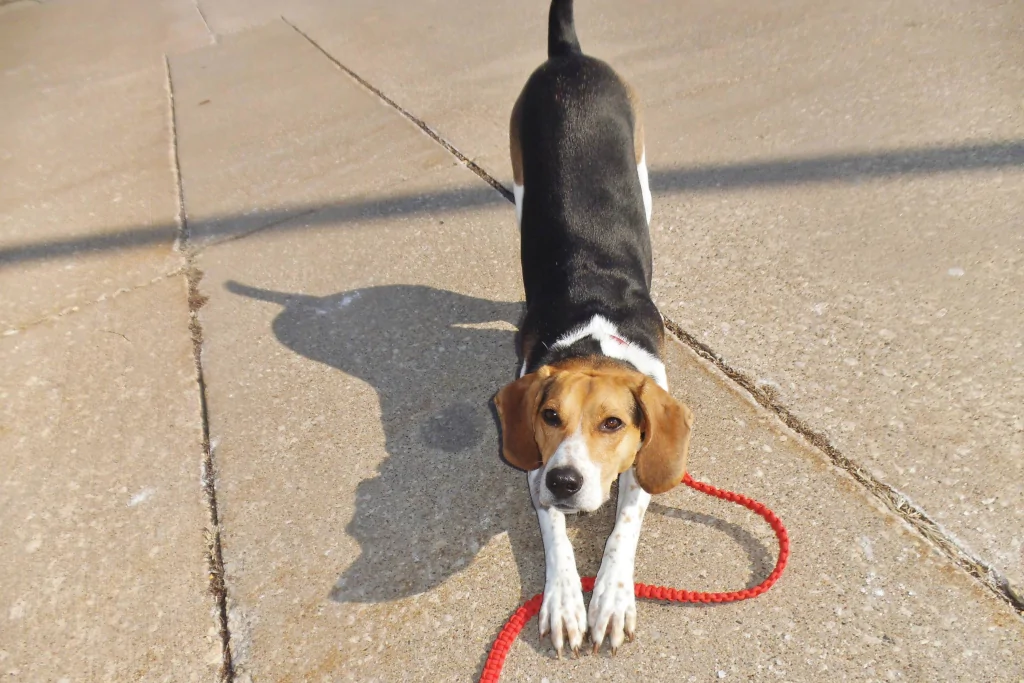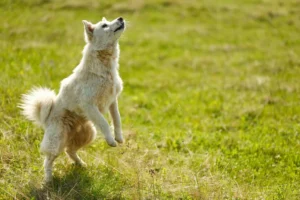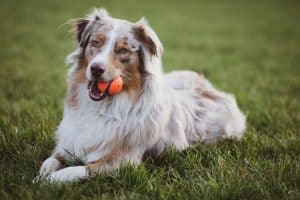As a fellow dog lover, I understand that you want to make your relationship with your furry friend as fun and fulfilling as possible.
Sometimes, though, it can be challenging to find new ways to engage and entertain them.
That’s where teaching your dog to bow on command comes in – it’s a fantastic trick that’s as impressive as it is adorable!
With a dash of patience and a sprinkle of wit, you’ll soon have your dog taking a bow like a seasoned performer, eliciting smiles and applause from everyone around.

Why Should You Teach Your Dog to Bow?
Teaching your dog to bow is not only a delightful party trick that will impress your friends and family, but it also offers several practical benefits.
For starters, it helps strengthen the bond between you and your canine companion, as you work together toward a common goal.
In addition, mastering the bow trick can enhance your dog’s overall obedience, focus, and coordination, keeping them mentally and physically sharp.
Last but not least, who wouldn’t want their beloved pet to be the center of attention, stealing the limelight with their grace and charm?
Preparing for the Training Session: Tools and Treats
Before you dive into teaching your dog the bow trick, it’s essential to set the stage for a successful training session.
Gather some treats that your dog absolutely adores – these will serve as positive reinforcement and motivation for your pup.
You’ll also need a comfortable, distraction-free environment where your dog can focus on learning the new command. Make sure the space is large enough for your dog to move freely and comfortably.
A clicker can also come in handy for this training, as it helps mark the exact moment when your dog performs the desired action correctly. If you don’t know how to use a clicker, follow this guide.
With these essentials in place, you’ll be ready to embark on an exciting training adventure with your four-legged friend!
Teaching the Bow Trick: A Step-By-Step Guide
Step 1: Getting Your Dog’s Attention
First, ensure that you have your dog’s full attention. You can achieve this by calling their name, making eye contact, or using a training clicker.
Having a few treats on hand to reward your dog for their focus will also help make this step easier.
Step 2: Luring Your Dog into Position
Hold a treat near your dog’s nose, making sure they can smell it but not reach it. Slowly move the treat down toward the ground, between their front legs. This will encourage your dog to lower their chest while keeping their hind legs up – this is the bow position.
If your dog tries to lie down, raise the treat slightly to prevent them from doing so.
Step 3: Introducing the Command
Once your dog is in the correct bow position, say the command “bow” or any other word you choose to associate with this trick.
Keep the tone of your voice consistent and clear. This will help your dog understand the connection between the command and the position they’re in.
Step 4: Rewarding Your Dog
When your dog successfully bows, immediately reward them with a treat and praise. This will reinforce the desired behavior and encourage your dog to perform the trick again. If you’re using a clicker, click it the moment your dog achieves the bow position, followed by a treat and praise.
Step 5: Repeating the Process
Practice this trick in short, focused training sessions to keep your dog engaged and motivated. Repeat the process several times, ensuring that your dog consistently performs the bow in response to the command.
Gradually reduce the dependency on treats, using praise and affection to reward your dog as they become more proficient in the trick.
Step 6: Increasing the Difficulty
As your dog becomes more comfortable with the bow trick, you can start increasing the difficulty. Try giving the command from a standing position or while sitting in a chair. This will help your dog generalize the command and perform the trick in various situations.
Remember to be patient and consistent, celebrating each successful attempt and providing encouragement along the way.
Troubleshooting Common Challenges in Training
Challenge 1: Dog Lies Down Instead of Bowing
If your dog keeps lying down instead of bowing, try adjusting the position of the treat when luring them into the bow. Move the treat slightly upward and closer to their chest to encourage them to keep their hind legs up. You can also try gently supporting their hindquarters to prevent them from lying down while they learn the correct position.
Challenge 2: Dog Loses Interest in the Training Session
Keep training sessions short and engaging to maintain your dog’s interest. If your dog seems to lose focus, try incorporating a variety of treats or using a toy as a reward. Break the session into smaller segments and offer praise and affection frequently to keep your dog motivated.
Challenge 3: Dog Doesn’t Respond to the Command
Ensure that you’re using the same word and tone of voice each time you give the command. Additionally, be patient and give your dog time to understand and respond to the command. Remember to reward them as soon as they perform the desired action to reinforce the connection between the command and the trick.
Challenge 4: Dog Only Bows When You’re in a Specific Position
To help your dog generalize the bow command, practice giving the command from various positions, such as standing, sitting, or even lying down. This will teach your dog to respond to the command regardless of your physical position, making the trick more versatile and reliable.
Challenge 5: Dog Performs the Trick Inconsistently
If your dog is struggling with consistency, break the trick down into smaller steps and reinforce each step individually. As your dog becomes more comfortable with each component, gradually combine them to complete the full bow trick.
To break the bow trick into smaller steps, first teach your dog to lower their front legs by luring them with a treat. Once they master this, work on maintaining the raised hindquarters separately. Gradually combine the steps for the complete bow.
Integrating the Bow Trick Into Daily Life
Adding the bow trick to your dog’s daily routine can be a fun and rewarding experience for both of you.
You can use the trick as a warm-up before engaging in more strenuous activities, such as a walk or a play session. It’s also a great way to help your dog burn off some mental energy when they’re feeling restless indoors.
For example, during a rainy day, I decided to have an impromptu training session with Sam, my well-trained dog. As we practiced the bow trick, I noticed Sam’s focus and excitement increase, transforming the gloomy day into a fun and engaging experience for both of us.
The bow trick can also serve as a conversation starter with fellow dog owners, allowing you to share training tips and stories, fostering a sense of community among pet lovers.
Here’s a great video from Kikopup on teaching your dog to Bow:
FAQs
Is the bow trick suitable for dogs with back problems?
Consult your veterinarian before teaching the bow trick to a dog with back problems, as it may put unnecessary strain on their spine, causing discomfort or exacerbating existing issues.
Can I teach my dog to bow on command without treats?
Yes, you can use alternative positive reinforcement methods, such as praise, petting, or a favorite toy, to teach your dog to bow on command without treats.
How do I prevent my dog from lying down instead of bowing?
To prevent your dog from lying down, adjust the treat’s position when luring them into the bow, or gently support their hindquarters to maintain the correct posture during the learning process.
Is there an age limit for teaching this trick?
While there’s no age limit for teaching the bow trick, training puppies and younger dogs is often easier due to their flexibility and eagerness. Be patient with older dogs, considering their physical capabilities to avoid strain or injury.
Alex, a passionate animal lover, has experience in training and understanding animal behavior. As a proud pet parent to two dogs and three cats, he founded AnimalReport.net to share insights from animal experts and expand his knowledge of the animal kingdom.




